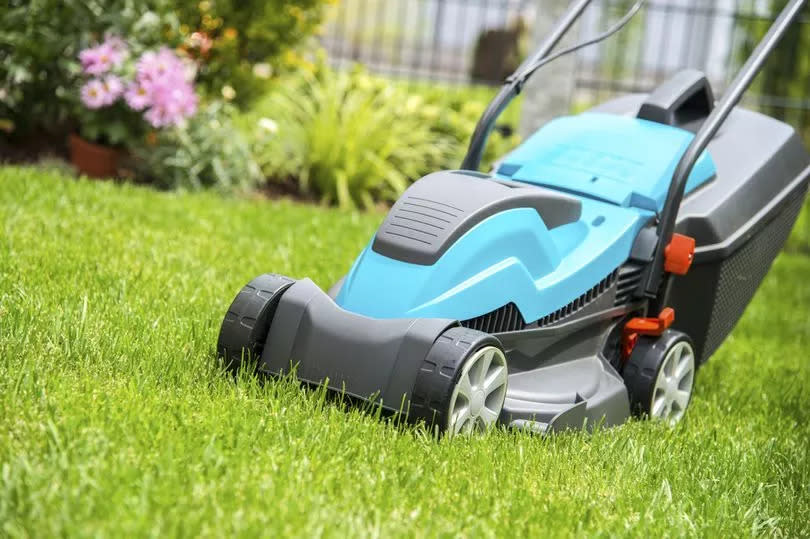Experts urge gardeners not make lawn mowing mistake that can 'damage' your grass

Households across the UK will be getting outside for a spot of gardening as the days grow warmer, with plenty of jobs to do as everything starts sprouting up.
One of the biggest recurring jobs throughout the summer will be getting the lawn mower out to keep the grass looking tidy, which can turn into a weekly job at the height of the season. However, the unpredictable British weather can make lawn maintenance a tricky task - and there are certain conditions you should never cut your grass in.
Experts at the Royal Horticultural Society (RHS) have advised that the worst thing you can do for your lawn is to mow it when it's wet. While it may be difficult to find a time when your grass is dried out if we have another summer of downpours, it's important to be patient as getting the mower out when it's still wet could end up ruining your garden, The Mirror reports.
READ MORE: Gardeners share unusual method to keep slugs away from plants using bathroom cupboard staple
The RHS advises: "Never mow wet grass. This can damage your turf and compact the soil. Wait until later in the day when the lawn has dried out, or postpone mowing to another day."
To keep a traditional lawn looking neat, the RHS suggests mowing weekly or fortnightly between March and October, with regular mowing helping to keep unwanted weeds at bay as well as encouraging denser grass growth. However, gardeners have been encouraged to leave the mower in the shed this month in order to help wildlife to thrive.
The No Mow May campaign is the idea of allowing wilder lawns with wildflowers to flourish, supporting bees, butterflies and other visitors to the garden. Providing a wilder grass habitat in your garden could have a significant impact according to Plantlife, charity behind the campaign - even if you only leave a small patch of your lawn to grow.
Sarah Shuttleworth, senior ecological advisor at Plantlife, said: "No Mow May matters massively because leaving lawns to just let it be in May allows a wonderful array of wild plants to flower and flourish. This floral diversity provided by more relaxed mowing regimes provides a rich food source for a wealth of wildlife through the summer."
When No Mow May has come to an end, Plantlife recommends less frequent mowing through the summer. It also encourages gardeners to avoid herbicides, fertilisers and moss killer as all can be detrimental to wild plants in the lawn, allow plants time to set seed before mowing, and remove grass cuttings following mowing to prevent nutrient build-up on the grass.
Providing a mix of habitats also helps wildlife, with shorter lawns with clover in providing food for bumblebees, while longer grasses are an essential resource for certain species of butterflies and moths, Plantlife said. A mixture of shorter grass and taller more structural areas will boost flower diversity and support other garden wildlife, the charity recommended.
The RHS advises choosing the highest blade setting on your lawn mower when the time comes to cut long grass, in order to avoid choking the mower with clippings. For very long lawns you may need to use a strimmer first and rake up the excess grass in order to reduce the overall height before going over it with your mower.
The experts also advise against mowing your grass too closely, which can scalp the lawn and leave unsightly bare patches. "Excessively close mowing can weaken the grass plants, encouraging shallow rooting and making the lawn more susceptible to drought damage, weeds and moss," the RHS explained.

 Yahoo News
Yahoo News 
